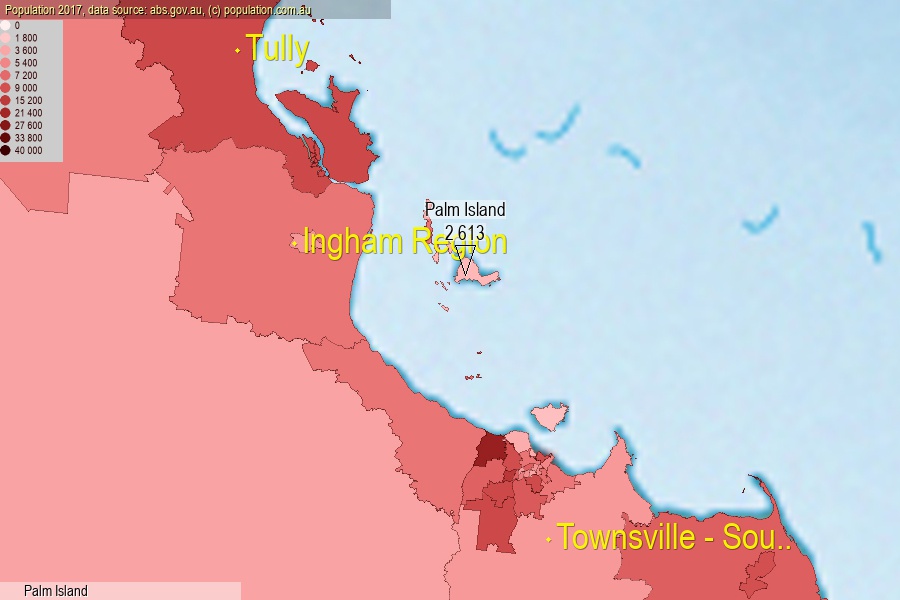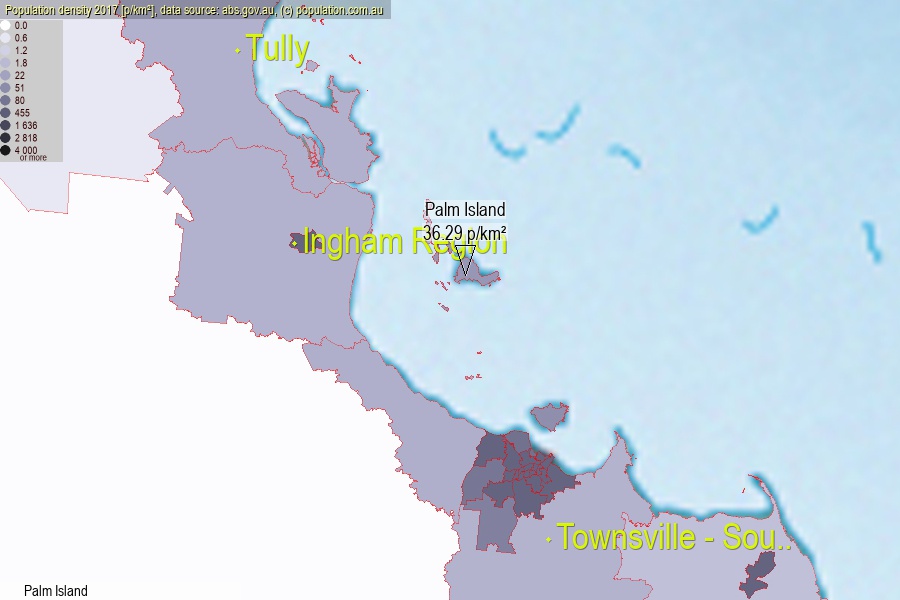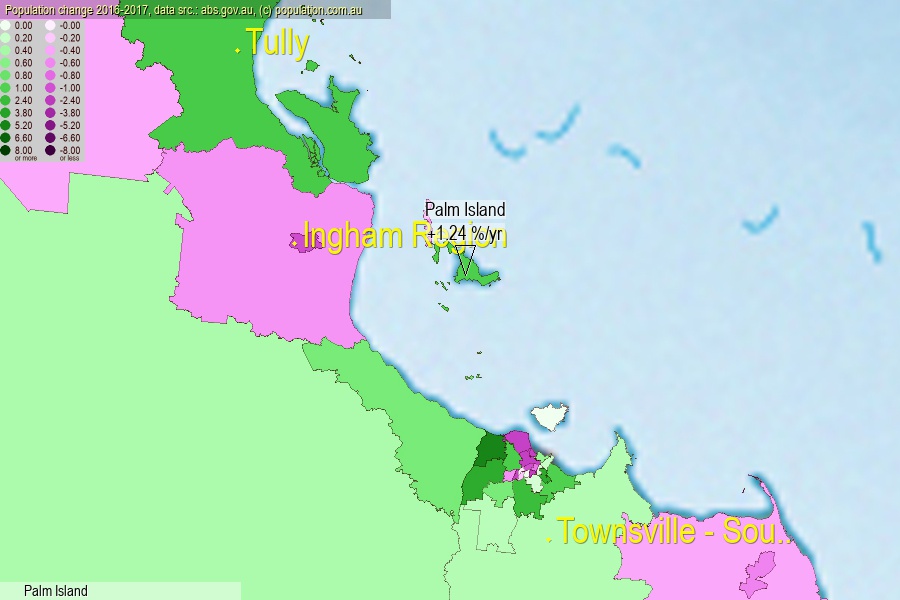 population.com.au
population.com.auLast official estimated population of Palm Island (as Statistical Area Level 2) was 2 613 people (on 2017-06-30)[2]. This was 0.01% of total Australian population and 0.052% of QLD population. Area of Palm Island is 72.00 km², in this year population density was 36.29 p/km² . If population growth rate would be same as in period 2016-2017 (+1.24%/yr), Palm Island population in 2025 would be 2 884. [0]



Click to enlarge. Palm Island is located in the center of the images.
Population [people], population density [p./km²] and population change [%/year] [2]
View borders » (new window) [4]
[1991-1992] -0.19 %/Yr.
[1992-1993] -0.38 %/Yr.
[1993-1994] -0.47 %/Yr.
[1994-1995] -0.33 %/Yr.
[1995-1996] +0.48 %/Yr.
[1996-1997] +0.47 %/Yr.
[1997-1998] +0.75 %/Yr.
[1998-1999] +1.82 %/Yr.
[1999-2000] +2.52 %/Yr.
[2000-2001] +1.52 %/Yr.
[2001-2002] -0.88 %/Yr.
[2002-2003] -2.09 %/Yr.
[2003-2004] -2.13 %/Yr.
[2004-2005] -2.41 %/Yr.
[2005-2006] -1.57 %/Yr.
[2006-2007] +4.44 %/Yr.
[2007-2008] +4.76 %/Yr.
[2008-2009] +3.00 %/Yr.
[2009-2010] +4.16 %/Yr.
[2010-2011] +4.44 %/Yr.
[2011-2012] +0.04 %/Yr.
[2012-2013] -0.39 %/Yr.
[2013-2014] -0.08 %/Yr.
[2014-2015] +0.91 %/Yr.
[2015-2016] +1.22 %/Yr.
[2016-2017] +1.24 %/Yr.
[0] Calculated with linear interpolation from officially estimated population
[1] Read more about SA2 and Australian Statistical Geography Standard (ASGS) on abs.gov.au
[2] Population data from Australian Bureau of Statistics (Population and density: 2017; change: 2016-2017)
[3] Digital Boundaries: Australian Statistical Geography Standard (ASGS) 2016.
[4] Border coordinates are simplifyed using Ramer-Douglas-Peucker algorithm.